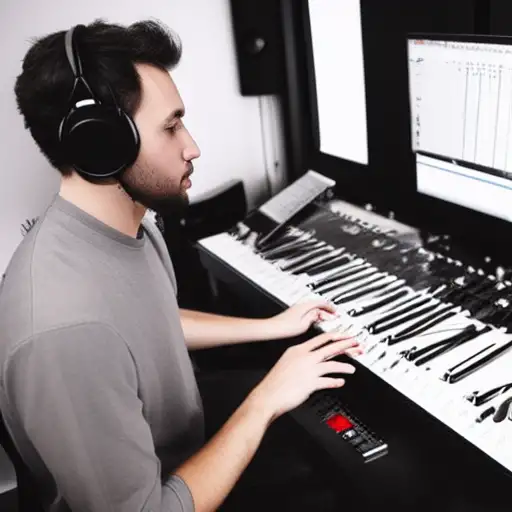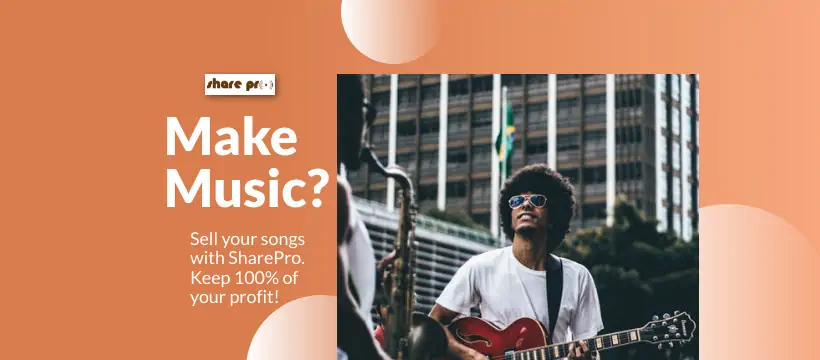7 Ways to Create a Signature Sound With Your Music
We take a look at several ways to help you create that signature sounds for your music.
Do you want your music to be instantly recognizable? If so, you need to create a signature sound. This is something that will set your music apart from everyone else's and make it uniquely yours. In this blog post, we will discuss seven ways that you can create a signature sound with your music.
What does a signature sound mean?
There's no magic formula for creating a signature sound, but there are a few things that all successful musicians have in common. First and foremost, they have a deep understanding of their instrument. They know how to coax a wide range of sounds and textures out of it, and they're always experimenting with new techniques.
Secondly, they have a clear vision for their music. They know what they want to achieve, and they're not afraid to take risks to realize their vision.
Finally, they can connect with their audience on an emotional level. They understand what makes people tick, and they use that knowledge to create music that resonates deeply. So if you're wondering how to create a signature sound of your own, start by studying your instrument, refining your vision, and finding ways to connect with your listeners.
1. Create a mix of music genres
Music is like a recipe. The right mix of genres can create a signature sound that is uniquely your own. By combining various elements, you can create something greater than the sum of its parts. For example, a dash of rap might add some attitude to your rock song, or a touch of R&B could give your pop song a sultry edge. The possibilities are endless. So go ahead and experiment. Who knows, you might end up creating a new music genre and find your own lane.
2. Incorporate elements of your personal life into your music
As a musician, I often find myself drawing inspiration from my personal life when creating new music. After all, the events and relationships that I experience daily provide an endless source of material to work with. From breakups to new romances, there's always something to write about. Even when my life is relatively calm and drama-free, I can still draw on past experiences to create something new.
In a way, using elements of my personal life helps to create my signature sound. By drawing on my own emotions and experiences, I'm able to create music that is both relatable and unique. So next time you're listening to that latest hit song, just know that there's a good chance it was inspired by something in that artist's personal life.

Creating your own unique signature sound means creating music that is memorable and all your own.
3. Stop listening to other artists
When it comes to creating a signature sound, it seems that the best approach is not to listen to other artists. By tuning out the noise of the music world, you can better focus on your creative vision. Of course, this is not to say that you should never listen to other artists.
Learning from your predecessors is an important part of honing your craft. However, if you find yourself constantly comparing your work to others, it can be tough to find your voice. So next time before your next studio session, try turning off the radio and Spotify, and see what happens. Chances are, you'll come up with something pretty unique.
4. Experimenting with different instruments and sounds
It's ok to experiment with different sounds just as long as you don't ruin the listener experience. It's always a good thing to try new sounds and think outside the box if you're looking to be memorable. Try out different instruments, effects, and production techniques until you find something that feels right for your music. Don't be afraid to experiment and try new things - that's how great artists find their signature sound.
5. Evolve over time
Even though it's important to be consistent with your sound, don't be afraid to evolve. As you grow as an artist, your sound will naturally change and evolve as well. This is perfectly normal and can help to keep your music fresh and interesting. Just make sure that any changes you make are intentional and fit in with the overall feel of your music.
6. Use a signature audio tag
If you've ever heard a song and instantly recognized the artist, then you know the power of a signature sound. For musicians, creating a distinct sonic identity is essential for stand out in today's crowded market. And one of the simplest ways to achieve this is by using an audio tag.
An audio tag is a short clip of music that serves as an identifying marker for an artist. By including an audio tag at the beginning or end of a song, a musician can create a unique sonic fingerprint that will help their music stand out from the rest.
In addition to helping to create a signature sound, audio tags can also be used to promote new releases, build anticipation for upcoming shows, and give fans a way to connect with an artist on a deeper level. So if you're looking to make your mark on the music world, don't underestimate the power of an audio tag.
7. Get feedback from others
Once you've developed a signature sound, it's important to get feedback from others - especially if you're planning on releasing your music publicly. Ask friends, family, and fellow musicians what they think of your sound and see if they have any suggestions for improvement.
It's also a good idea to get feedback from people who aren't familiar with your type of music - they may have some helpful insights that you wouldn't have thought of yourself.
Get Your Music Noticed by Creating a Signature Sound
Blog Article Tags
signature sound unique indie music indie artist music recording how-toMore Articles
Trying to Make Music but Feeling REALLY Awful? You’re Not Alone - We discuss reasons why some people find it hard to make music & how to overcome it.
How To Write An Indie Artist Bio - If you're looking to create a compelling artist bio, we help you every step of the way.
How To Maximize Your Productivity as an Indie Artist - We'll show you how to be productive so have more time to make more music.
How To Get Your Music On Playlists As an Indie Artist - If you're looking to get your music on playlists, this article helps you get there.
How Record Sampling Changed Hip-Hop Forever - To understand how record sampling started and changed Hip Hop keep reading.


